Guilty by gender: Where girls are sent during menstruation in Nepal
Categories: Asia | Nations | Society
By Pictolic https://pictolic.com/article/guilty-by-gender-where-girls-are-sent-during-menstruation-in-nepal.htmlThe mother of Indian activist and photographer Poulomi Basu, a widow, does not wear red. In India, where Poulomi was born, red represents both purity and sinfulness at the same time and is also used to mark favorable occasions. Traditional Hindu culture requires widows to dress only in a sari made of white fabric, in the color of sorrow and death, until the end of their lives. In addition, they are forbidden to attend the holidays and get married again.
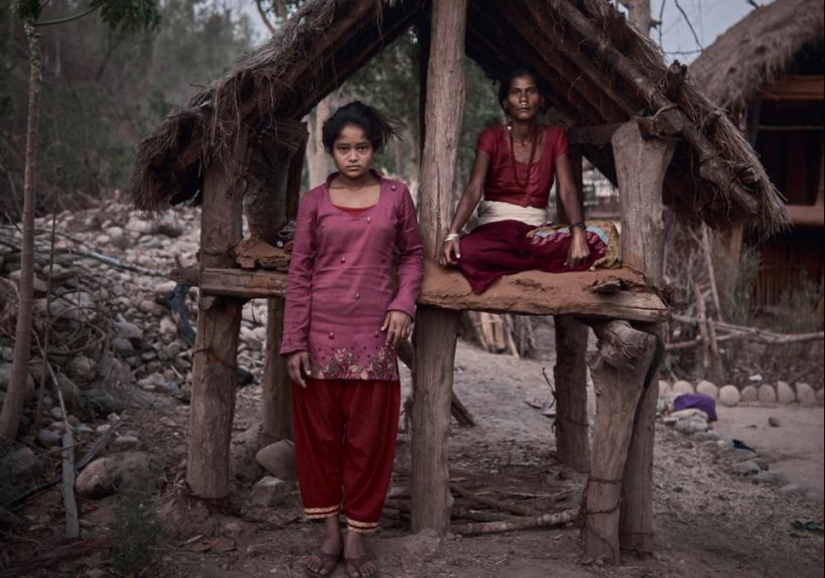
For 16 years after the death of her father, 33-year-old Basu was able to convince her mother to change white saris for brighter clothes, but she still does not touch red and bright pink. The photographer managed to change the influence of the oppressive tradition on the life of one of the dearest people in her life — her mother.
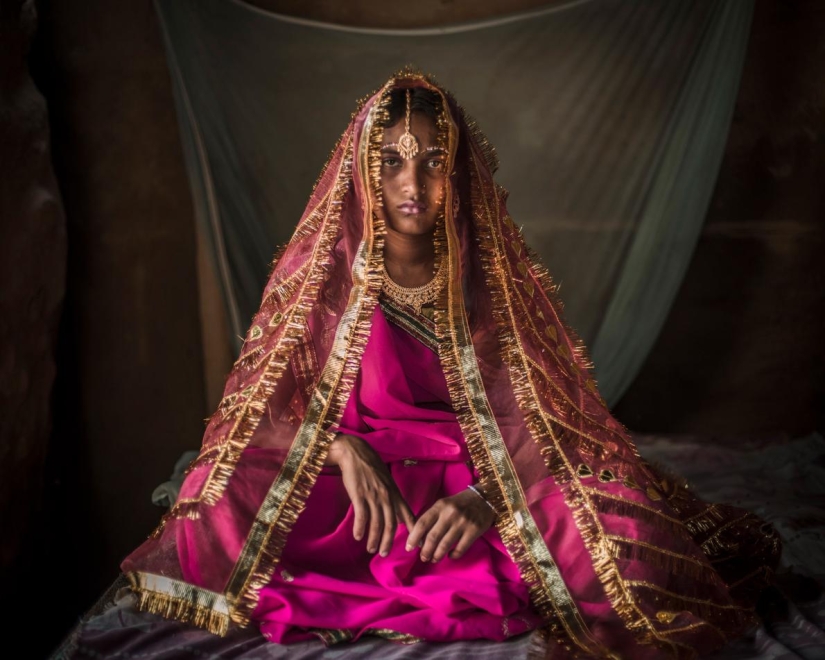
In some parts of Nepal, it is a common belief that if a girl is married off before she starts menstruating, her relatives will go to heaven. According to Basu, child marriages and chaupadi are connected, since both traditions are built around ideas about cleanliness before and after menstruation.
In the photo project A Ritual of Exile ("Ritual of exile") Basu studies red as a color associated with menstruation. Its long-term goal is to help put an end to the entrenched Hindu Chaupadi tradition, which consists in the practice of evicting and isolating women during menstruation and normalizes the vicious cycle of violence supported by customs, traditions and religion.
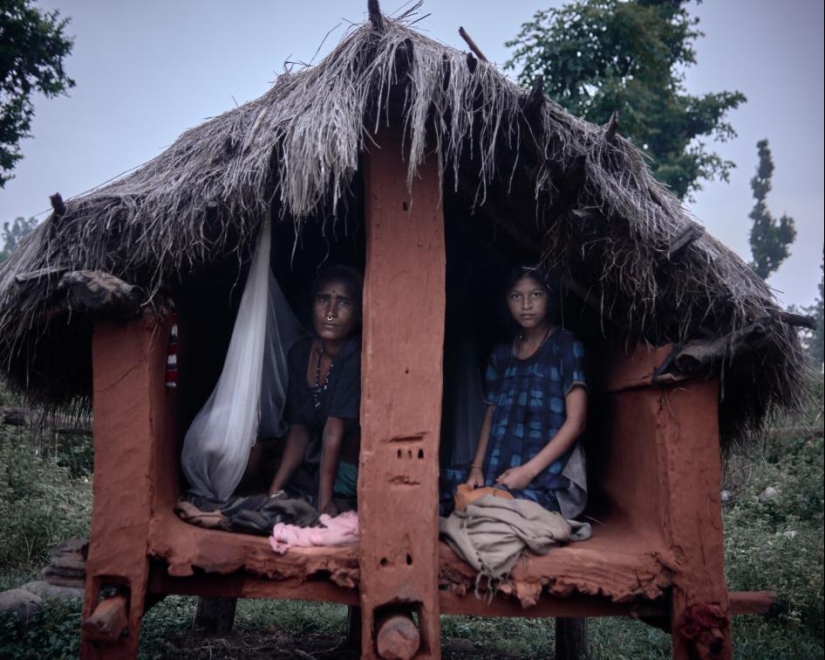
The pictures taken in neighboring Nepal tell about the extreme situation of women from remote regions of the country, in which they find themselves for a week every month, and this continues for 35-45 years of having a menstrual cycle. They are considered unclean, untouchable and capable of bringing misfortune to people, livestock and land during bleeding and are driven out of the house. Some of them settle in sheds nearby, while others have to go a 10-15-minute walk from home, overcoming dense thickets of forests to get to small secluded huts.
While in exile, women suffer and even die from the unbearable heat, from suffocation from the fires they light to keep warm in winter, from the venom of cobras, as well as from rape.
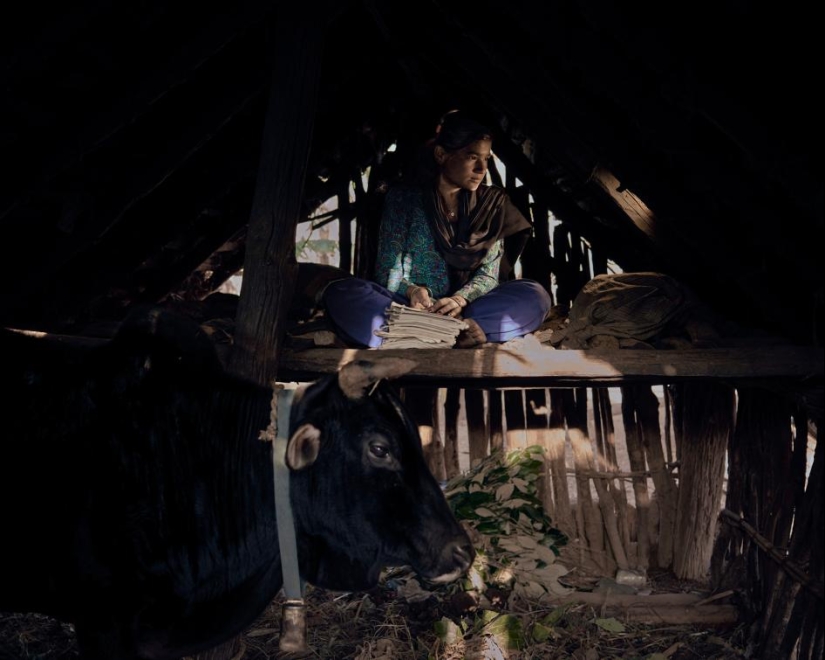
The practice of chaupadi, which includes an ascetic diet of rice and lentils, makes it more difficult for Tula to be in school and earn money for her family. She's thinking about dropping out of school.
Basu started working on the project in 2013, visiting Nepal for about two weeks once a year. The heroines of the photo project are difficult to access, since the possibility of shooting often depends on their husbands, mothers-in-law, school teachers and on the women themselves who have been ostracized. While Basu walked for 6-8 hours through the mountainous terrain to the villages where chaupadi is practiced, she had time to reflect.
The bright and changeable landscape of the countryside in Nepal with its clear sky strewn with stars, or thickening clouds foreshadowing a storm, for the photographer symbolizes the pain experienced by local women.
According to Basu, her work is very quiet, because in many ways it is about silent struggle and protest, which are inevitable in conditions of suppression of women in a patriarchal society.
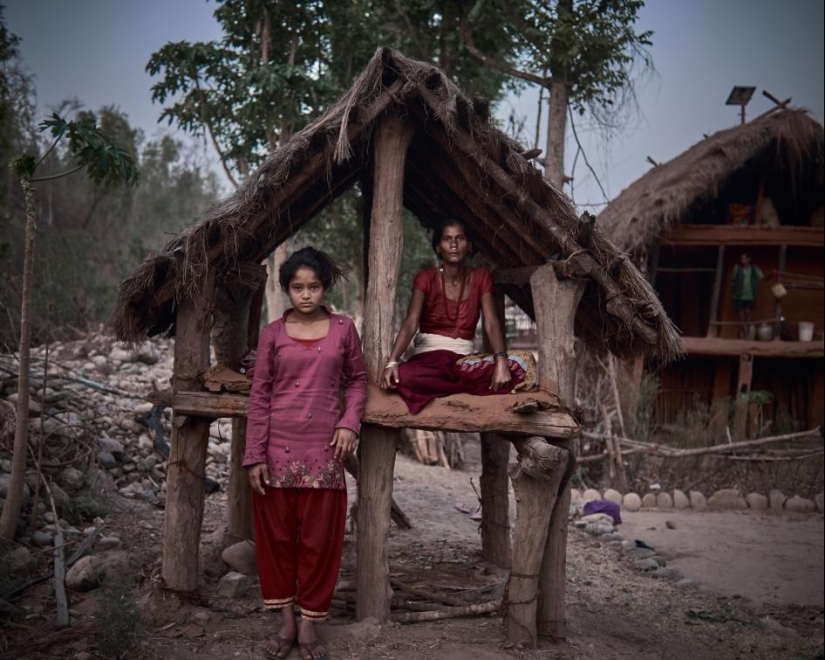
The photographer remembers the story of Lakshmi, a woman in her thirties with three children. Her husband left five years ago and never came back. Nevertheless, Lakshmi dutifully goes into exile during menstruation. Her mother-in-law monitors her behavior. Lakshmi is obliged to take three children with her to remote forests.
Then she told about a schoolteacher, one of the few women she had met in the villages who did not practice chaupadi. When her best friend died as a result of rape in exile, the teacher's husband supported her in her decision to stop chaupadi. In the overall picture of the struggle with chaupadi, this story is quite positive, the photographer notes.

The chaupadi hut shared by 14-year-old Pabitra Pariyar and 25-year-old Dharma Nepali Pariyar, in Nepal's Surkhet district.
One of the photographer's favorite pictures shows 34-year-old Chandra Thiruva and her two-year-old child Madan, who share a hut with 14-year-old Mangu Bika. Women who observe chaupadi at the same time sleep tightly pressed against each other.

14-year-old Uma did not tell anyone for the first time that she was menstruating, for fear that she would be sent into exile. When she could no longer hide the bleeding, her family found out about it. As punishment, she was sent to sleep on sheaves of hay in a barn.
Bass is familiar with the feeling when others make decisions for you, and the anger and confusion that it provokes.
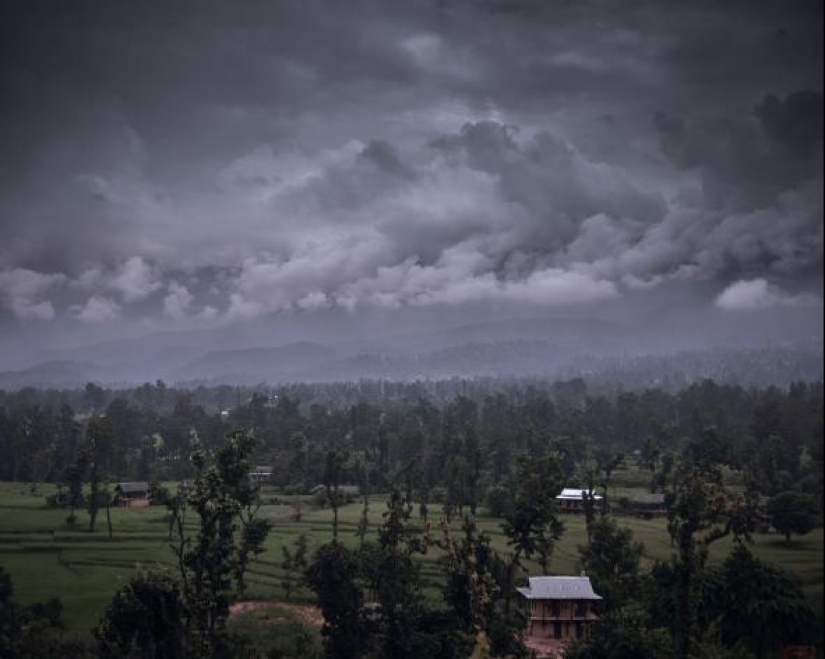
She also knows the power of a mother who will do anything to help her daughter break the vicious circle of suffering and injustice. After the death of his father, the conservative elder brother Basu became the head of the family. The photographer decided to leave home and, having received unexpected financial help from her mother, moved to Bombay. It was a huge boost to a life free from traditional restrictions, which she now lives.
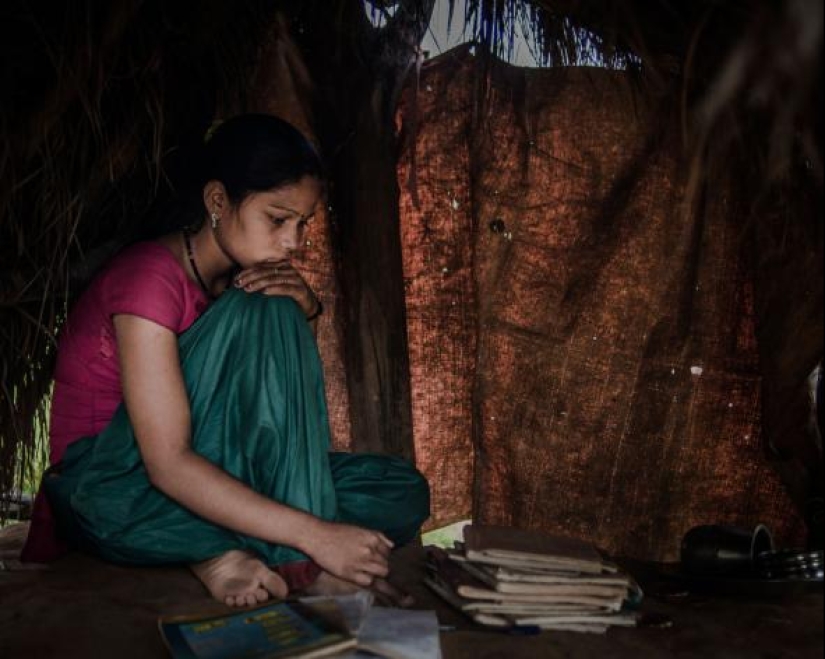
Basu admits that in her photographs there is an emotional connection between her own experience and the experience of mothers who instinctively protect children in the face of danger in extreme conditions.
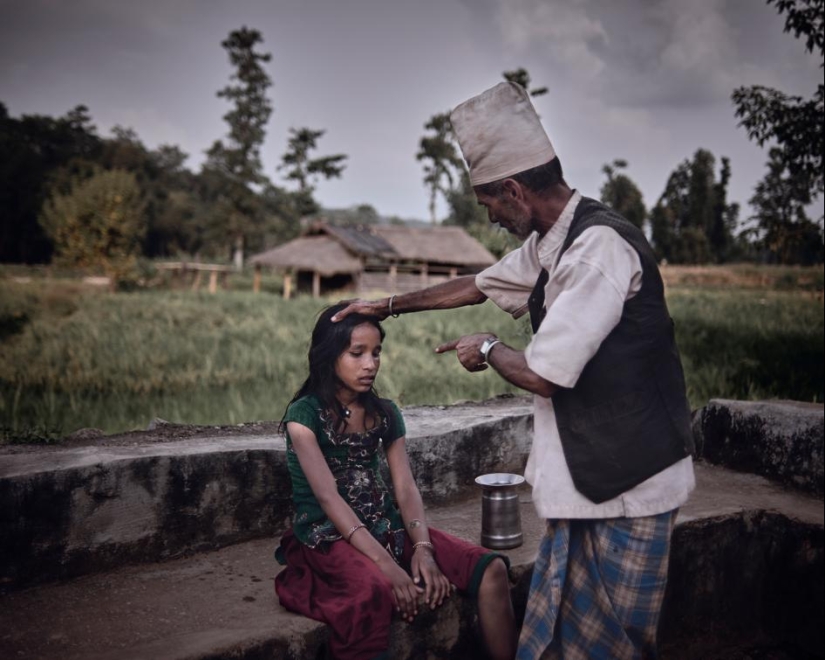
Despite the fact that the Supreme Court of Nepal declared chaupadi illegal in 2005, the women in Basu's photographs are taught to obey tradition implicitly. But this does not mean that they agree to chaupadi for their daughters. Some of the heroines quietly asked the photographer to take their daughters with them: "Won't you take my daughter? Take her to the city with you. Just take it and run."
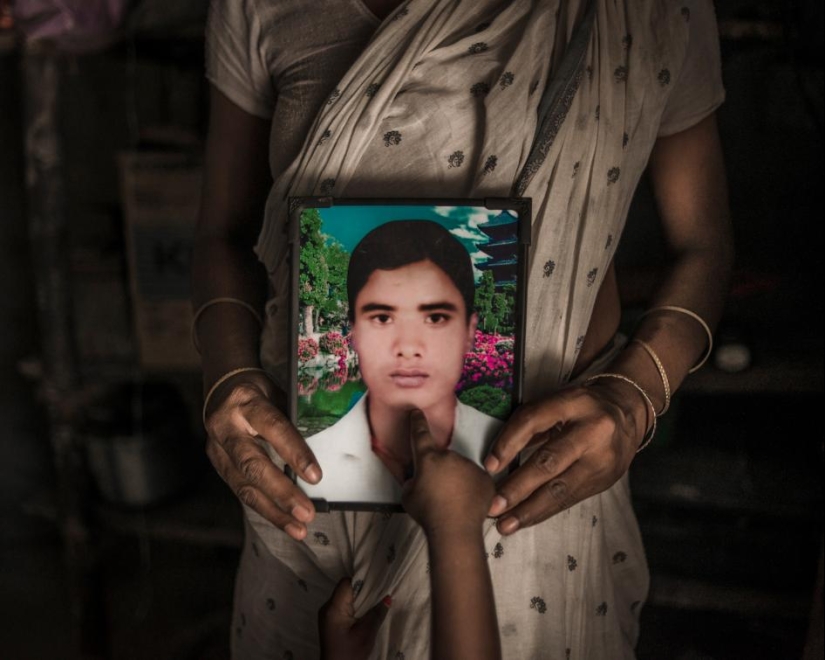
Pujan was working in India, he was electrocuted and died. As a result of the death of their husbands, widows like Mamata become outcasts of society.
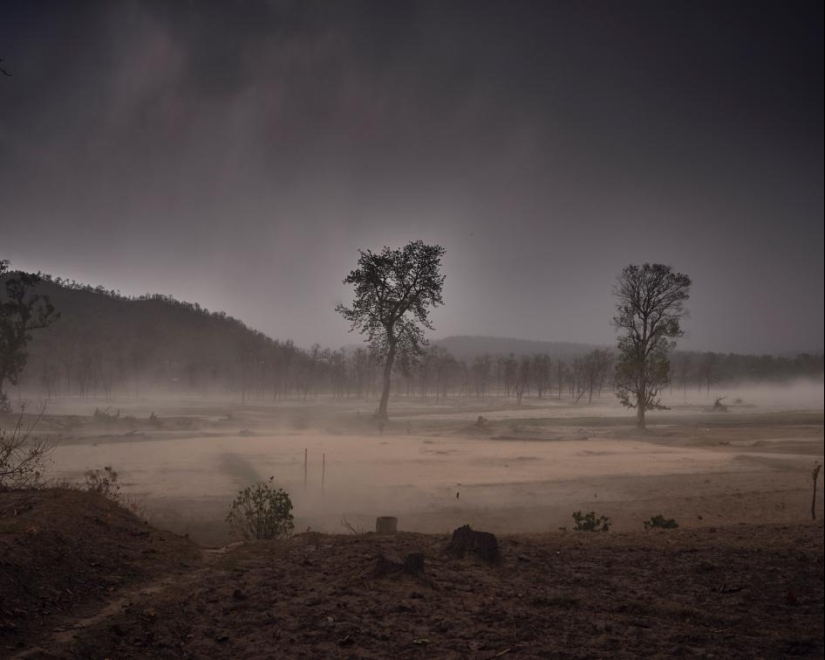

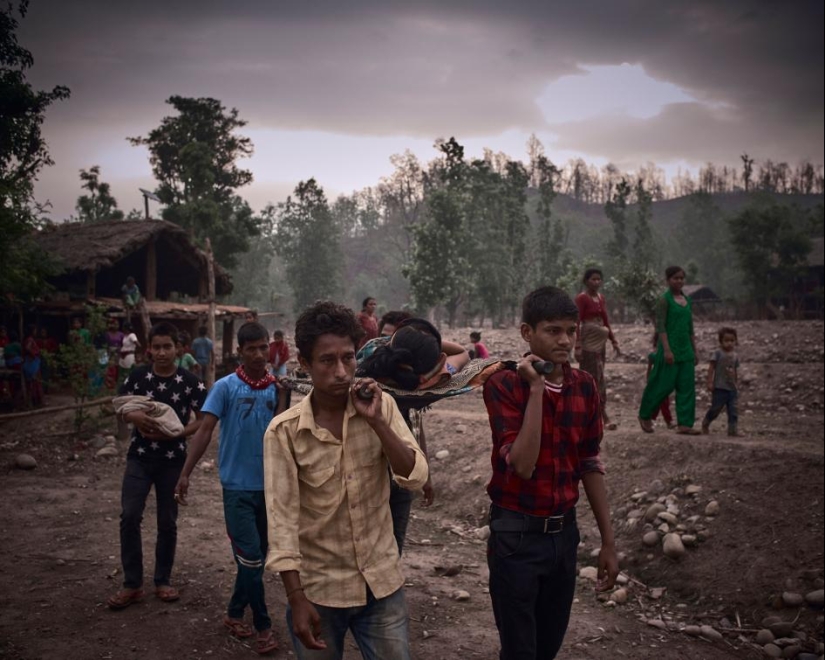
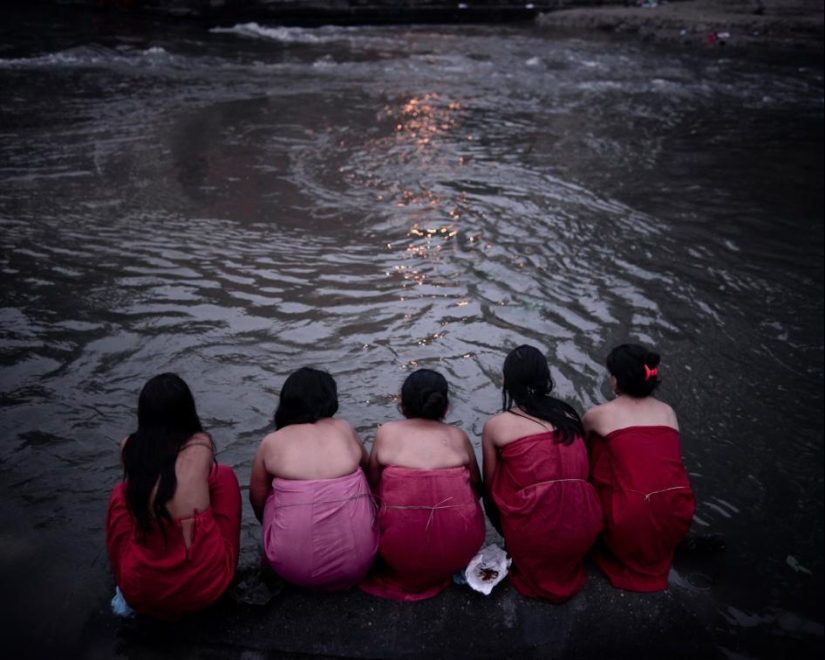
16-year-old Saraswati had postpartum bleeding. She and her newborn baby were sent into exile for 15 days, where she developed fever and swelling. She had to be taken to the hospital.
During the annual Rishi Pachami Festival in Kathmandu, women perform a ritual ablution from sins committed during menstruation.
Recent articles

Most of us think that the color of the eggshell does not play any role and it is possible not to pay attention. But it's not and ...

The more we rely on technology, the more potential power hackers gain over us. It doesn't matter if their goal is to help or cause ...

Creating a good portrait is one of the most difficult tasks for any photographer. In order to make a really natural and memorable ...